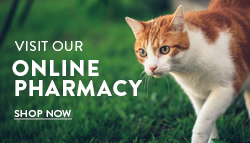Pet Safety
Travelling with Pets
As the holidays approach, people’s thoughts turn to family gatherings and vacation time.
For many, vacation plans include travel and this travel will include their pets.
The Travel Industry Association reports that 29.1 million Americans have traveled with a pet on a trip of 50 miles or more in the past 3 years. One study notes that nearly 40% of U.S. dog owners state they travel with their dogs. It is difficult to tell how many of these owners discuss travel plans with their veterinarians, yet there are many important aspects of pet travel that owners should know about and may not.
Special Considerations:
Anxious pet travelers will need special consideration. For pets traveling by car, very gradual acclimation (started simply with sitting in a parked car, then around the block, and so on) will sometimes help. FOr those it does not help, medication may be considered. Travel by air is somewhat more complicated – the American Veterinary Medical Association and the American Humane Association do not recommend sedating anxious pets for air travel and caution veterinarians and owners against it. Veterinarians will need to consult individual owners in these cases. Sometmes, leaving the pet home with a pet sitter or in a boarding facility is the best option for these pets. Cats, in particular, are notoriously poor travelers and are generally better off left out of travel plans, unless the owner is moving. ANother potential problem for traveling pets is motion sickness. One study cites that 17% of dogs suffer from motion sickness as reported by owners. When acclimation does not help, medication for these pets may be considered. Antihistamines, such as the over-the-counter drugs diphenhydramine and dimenhydrinate, have ofter been used in such cases but have variable efficacy and can be sedating. We carry a drug called Cerenia, a nonsedating medication for the prevention of motion sickness in dogs., has been recently approved and is another alternative.
If you feel your pet would benefit from this medication or you have more questions about traveling with your furry friend call our office or email us today!
Travel Checklist
Our veterinary team wants you and your pet to have a safe and happy trip, but there is a lot to remember when traveling with your pet. Use this checklist to help you remember what you need to do and what you should be bringing with you. And remember – we’re here to help if you have any questions or concerns!
To Do:
- Are vaccines up-to-date? Any additional vaccinations needed?
- Health Certificate ( need within 10 days of travel)?
- Heartworm/flea prevention?
- Any other medications needed/prescriptions to refill (eg, for prevention of motion sickness) or take along?
- Identification (microchip, tattoo, other)?
- Address any other concerns (eg, motion sickness or what to do if pet becomes ill)?
- Plan extra time/stops for exercise and potty breaks.
- Check with airline for specific regulations/requirements.
- Check with airports for information about pet exercise/rest areas.
- Check the U.S. State and Territory Animal Import Regulations Web site (car travel) for any relevant requirements.
- List places to stay overnight that will accept pets and/or list boarding facilities.
- Get contact information for local veterinarian at place of destination.
- Make sure there is somewhere for pet to stay or someone to take care of pet at place of destination for times you will be out without your pet.
- If staying at someone’s house, check if there will be any potential problems with the pet staying (eg, allergic children or aggressive animals).
To Bring:
- Health history form (including your vet’s contact information)
- Proof of rabies vaccination
- Health Certificate
- Pet’s regular rood, jug of water (for car trip), and bowls
- Pet first-aid kit
- Extra leashes, pet seat belt, and/or carrier/crate for confinement in car and at destination.
- Necessary medications, heartworm/flea preventative, and/or written prescriptions
- Recent photograph of pet
- Collar with tags
Dog Park Safety Tips
Going Off Leash? Be On Guard
Off-leash dog parks are becoming increasingly popular in cities across the nation, and for a good reason: they’re a great place to let your dog run around, play and socialize! But keep in mind, dogs will be dogs – which is why owners need to be extra vigilant about these common dog park – related injuries and diseases.
Dog Park concerns:
1) Sprains
Playful, excitable dogs are prone to accidents at the park – they can trip in a hole while running or maybe play a little too enthusiastically with a pal who’s a bit too much to handle, resulting in sprained joints. Be sure to keep a watchful eye on your dog to avoid these types of incidents.
2) Lacerations
Sometimes even in the friendliest wrestling match between dogs can turn into a tussle. Cuts and scratches are common dog park injuries, so keep your pooch away from aggressive dogs and look out for foreign objects like fallen branches that could cause harm while dogs are at play.
3) Toxins
Be aware of any chemicals used by park maintenance crews, like fertilizers, snail bait or pesticides. If these chemicals are in use, visit another park or return another day. If you suspect that your dog has been in an area where chemical treatments have been used, clean his feet and legs thoroughly with soap and water, and watch carefully for signs of exposure.
4) Invaders
Regular flea and tick preventive treatment is critical for every dog, especially those that frequent dog parks. Also, be a good park patron by picking up after your dog and reminding others to do the same. Internal parasites, viruses and bacteria can be easily transmitted by contact with fecal matter from other dogs.
5) Overheating
No matter what time of year, always be sure to have plenty of water on hand to quench your dog’s thirst and prevent overheating. Be sure to take frequent water breaks so your dog can stay hydrated. If your dog shows any signs of overheating such as excessive panting, vomiting or sluggishness, contact us immediately.
Noncompliance Risks
Risks of not giving medicine precisely as prescribed
From Greenie Pill Pockets
Various health problems may arise or worsen if medication is not taken as prescribed. Check the chart below for possible implications or ask your veterinarian.
Condition: Bacterial Infections (Abscess, bladder infection, respiratory condition
Common Medicine Types: Antibiotics
Potential Risk of not taking meds: Incomplete cure or condition recurrence or Bacterial drug resistance
Condition: Allergies (Skin disorder, gastrointestinal condition)
Common Medicine Types: Antihistamines, Corticosteroids, Cyclosporine
Potential Risks if not Taking Meds: Persistent or recurring condition, manifestation of allergy into asthma or inflammatory bowel disease.
Condition: Cardiovascular (Heart disease, hypertension)
Common Medicine Types: Furosemide, Diltiazem, Benazepril, enalapril
Potential Risks of not Taking Medicine: Worsening of condition, leading to system deterioration and shortened lifespan.
Condition: Pain ( Arthritis, post-surgical injury)
Common Medicine Types: Opiods, non-steroidal anti-inflammatory (NSAIDs)
Potential Risks if not Taking Medicine: Unnecessary discomfort, Extended healing, Elevated pain.
Condition: Hormonal Disorders ( Thyroid conditions, Adrenal conditions)
Common medicine types: Tapazole, levothyroxine, thyroxine
Potential Risks of not Taking Medicine: Weight Imbalance, Decline in the overall health of the pet
Condition: Parasites (Fleas, heartworm, whipworm, roundworm)
Common Medicine Types: Lufenuron, milbemycin, oxime, ivermectin, pyrantal, strongid, Revolution, Heartgard, Frontline, Comfortis…
Potential Risks of not Taking Medicine: Serious internal infections, discomfort, and possible transmission to humans. Fleas on pet and in the living environment.
Emergency Preparedness for Pets
From VPI Pet Insurance
It is easy to think that disasters only affect “other people”. But an emergency can strike at any time, in many forms – and pets are often the most innocent victims. Taking a few simple steps to plan in advance can help you keep your pet safe in the event of an emergency.
- Arrange Shelter
- Make arrangements with a trusted friend or neighbor to take care of your pet if you can’t make it home.
- Since health and safety regulations often prohibit disaster shelters from accepting pets, find out pet policies for hotels and motels in the area to which you plan to evacuate
- Compile a list of boarding facilities including local animal shelters and veterinary offices that can provide foster care for your pet.
- Most improtant, never leave your pet behind. Even if you can’t bring her with you, it’s vital that you arrange for some form of temporary care. Animals left alone in a disaster situation have little chance of survival.
- Put Together an Emergency Pet Kit
Keep your kit in a waterproof container that’s easy to carry. Items to include:
- Food, water and medications for one week (don’t forget a can opener if packing canned food)
- Food and water dishes
- Leash and/or carrier
- Pet first aid kit
- Copies of medical and vaccinations records
- Clear, current photos of your ept in case you’re separated
- Poop bags or litter box and littler
- Blanket or towels
- Make sure Your Pet is Wearing ID
Provide your pet with a secure collar and current ID tag with your cell phone number on it. Also, consider getting your pet microchipped – that way, even if her collar comes loose, animal recovery facilieties can pull up your contact information with a quick scan.
- Neighborhood Watch
Remember, emergencies aren’t always limited to natural disasters. Have you thought about what you would do if you were unable to get home to your pet during a power outage or if there was a gas leak in the neighborhood?
It’s a good idea to make arrangements ahead of time with a trustworthy neighbor who is familiar with your pet to be an emergency caretaker. Exchange keys and make sure you provide your neighbor with your cell phone number as well as your veterinarians contact information. Also, show that there are pets inside by placing an emergency decal in a front window of your home. Ask your local police or fire departments if they provide decals, or contact your favorite pet store.
First Aid For Pets
Even Fido and Fluffy can suddenly fall ill or become injured. It’s important to stabilize your pet before getting him to a veterinary clinic. Some simple first aid measures can provide a necessary and life-saving remedy until more serious medical help can be reached.
Stay Calm
Don’t panic. When you’re calm, so is your pet. Also, you’ll be able to accurately describe the accident and your pet’s symptoms to your veterinarian, who can then better assess his condition.
Focus On Fido
As you prepare to take your pet to the clinic, ask someone else to call your veterinarian. Now you can focus on administering first aid, such as applying direct pressure to a wound to help stop the bleeding and/or assessing the best way to move your pet without causing further pain or injury.
Handle With Care
Carefully restrain an injured pet not only for your safety but for his as well; even the friendliest of pets can bite or scratch. Muzzle a dog unless he is unconscious, has difficulty breathing or has a mouth injury. Use an E-collar or a carrier for cats; muzzles can inhibit their breathing and create additional distress.
Your Veterinarian Knows Best!
Whatever the situation, if you suspect your pet is ill or injured, don’t hesitate to take him to your veterinarian. The earlier the problem is identified and the appropriate treatment is started, the better the outcome will be.
Budding Poisons
 Amaryllis: Can cause vomiting, diarrhea, depression, appetite loss, tremors, drooling and abdominal pain. Amaryllis: Can cause vomiting, diarrhea, depression, appetite loss, tremors, drooling and abdominal pain. |
 Azaleas: Can cause weakness, upset stomach, drooling, heart failure, depression and possible coma. Azaleas: Can cause weakness, upset stomach, drooling, heart failure, depression and possible coma. |
 Christmas tree pine needles: Can produce oral irritation, vomiting, diarrhea, lethargy, trembling and posterior weakness. Christmas tree pine needles: Can produce oral irritation, vomiting, diarrhea, lethargy, trembling and posterior weakness. |
 Chrysanthemum: Results in vomiting, diarrhea, depression, drooling and appetite loss. Chrysanthemum: Results in vomiting, diarrhea, depression, drooling and appetite loss. |
 Daffodil: Can cause severe gastrointestinal illness, convulsions, seizures, low blood pressure and tremors. Daffodil: Can cause severe gastrointestinal illness, convulsions, seizures, low blood pressure and tremors. |
 Easter cactus: Can cause vomiting, diarrhea and depression. Can cause staggering in cats. Easter cactus: Can cause vomiting, diarrhea and depression. Can cause staggering in cats. |
 Holly: Commonly found during the Christmas season, can cause intense vomiting, diarrhea and depression. Holly: Commonly found during the Christmas season, can cause intense vomiting, diarrhea and depression. |
 Hyacinth: Can cause intense vomiting, diarrhea, depression and tremors. Hyacinth: Can cause intense vomiting, diarrhea, depression and tremors. |
 Lilies: Can cause vomiting, diarrhea, depression and kidney failure. Lilies: Can cause vomiting, diarrhea, depression and kidney failure. |
 Mistletoe: Another Christmas plant, ingestion can cause significant vomiting and diarrhea, difficulty breathing, collapse, erratic behavior, hallucinations and death. Mistletoe: Another Christmas plant, ingestion can cause significant vomiting and diarrhea, difficulty breathing, collapse, erratic behavior, hallucinations and death. |
 Mulch with cocoa beans: Dogs are attracted to the noticeable scent of chocolate and can consume a great quantity, which can lead to restlessness, hyperactivity, muscle twitching, increased urination, excessive panting, increased heart rate and blood pressure levels and seizures. Mulch with cocoa beans: Dogs are attracted to the noticeable scent of chocolate and can consume a great quantity, which can lead to restlessness, hyperactivity, muscle twitching, increased urination, excessive panting, increased heart rate and blood pressure levels and seizures. |
 Oleander: May cause vomiting, heart failure and possible death. Oleander: May cause vomiting, heart failure and possible death. |
 Poinsettia: Can cause irritation to the mouth and stomach and sometimes vomiting. Poinsettia: Can cause irritation to the mouth and stomach and sometimes vomiting. |
 Sago palm: Can cause vomiting, diarrhea, depression, seizures and liver failure. Sago palm: Can cause vomiting, diarrhea, depression, seizures and liver failure. |
 Tulip: Can cause intense vomiting, depression, diarrhea, drooling and appetite loss. Tulip: Can cause intense vomiting, depression, diarrhea, drooling and appetite loss. |
Play It Safe
Take a trip to the pet store and the vast variety of squeaky, cute toys will call out to you, begging to be bought. Beware of toys with small parts, any with metal or those which can be swallowed in part or whole. Never leave cats alone with string toys; accidental ingestion is life-threatening and often requires expensive surgical procedures.
Curb That Behavior
Scratching posts for cats and kittens are a must-have to prevent behavior problems. Kittens need them as a safe perch to escape to when they live with children or dogs, and you can train your kittens to scratch on the posts rather than on your furniture. While scratching on furniture is normal marking behavior, you can train your kitten not to by spraying Feliway®, a pheromone that tricks them into thinking they have already marked a spot.
Dogs and puppies can be enrolled in obedience training beginning at six months of age. Having a well-trained dog who listens to your commands can prevent accidental injuries such as running into the street toward an oncoming car, and can curb aggressive behavior such as biting.
Positive reinforcement is another remedy for curbing your pet’s bad behavior. Praising a pet for doing the right thing is more effective than scolding them for doing the wrong thing.


